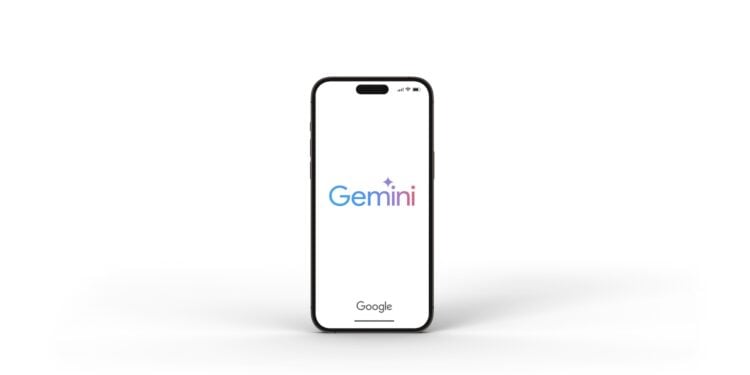Google is expanding its AI offerings with Nano Banana Pro, a new image generator built on the previous Nano Banana model. The system utilizes Gemini 3 Pro, delivering significantly more precise results, especially when it comes to text within images. This release demonstrates Google's strong commitment to AI image generation, aiming to make creative work faster and more reliable.
The market for AI tools continues to grow, and Google is consistently focusing on models that combine practical functionality with high quality. Nano Banana Pro is aimed at anyone who wants to create visual content quickly and cleanly without relying on complex workflows. The model primarily improves the rendering of text in images while simultaneously expanding the possibilities for infographics, charts, and image editing. Integration with existing Google services ensures that the generator is ready for immediate use in everyday work.
Nano Banana Pro is based on Gemini 3 Pro
Nano Banana Pro utilizes the power of Gemini 3 Pro, Google's most advanced AI model to date . This results in image content with clearly rendered text. Whether short claims or longer blocks of text, the results appear stable and clean. Various fonts, textures, and word styles are supported. Because the model is multilingual, content can be generated in multiple languages without any additional preparation.
Stronger focus on learning content and infographics
Google highlights that Nano Banana Pro excels at handling text-heavy infographics and diagrams. The model generates content suitable for learning purposes because text and images appear clear and well-organized. Integration with Google Search allows information from search results to be directly incorporated into graphics. Nano Banana Pro combines more elements than before and allows users to upload up to 14 of their own images. Consistent collaboration across up to five people is maintained, which is useful for campaigns, storyboards, or series.
New tools for targeted image editing
In addition to image generation, Nano Banana Pro offers extensive editing functions. Individual image parts can be selected, adjusted, and locally edited. Camera angle, focus, colors, and lighting can be precisely modified. Output options in 2K and 4K are available for high-quality productions.
AI image recognition by SynthID
With Nano Banana Pro, Google is introducing a labeling system for AI-generated images. Every image created by Google AI will contain SynthID attributes and receive a visible watermark if it was created by free or AI Pro users. This is intended to make it clear whether an image originates from Google AI.
Availability in Google services
Nano Banana Pro is available in the Gemini app when using the "Create Images" feature in the Thinking model. Free users receive a limited number of images and are automatically reverted to the original Nano Banana model once these are used up. Google AI Plus, Pro, and Ultra subscribers can create more images. Nano Banana Pro is also available to Pro and Ultra users in Google Search's AI mode.
Use in Google Ads and for developers
Google also makes the model available to companies using Google Ads, enabling faster generation of advertising materials. Developers can integrate Nano Banana Pro into their own projects via the Gemini API and Google AI Studio.
Nano Banana Pro as a new step in Google's AI strategy
Nano Banana Pro demonstrates Google's consistent development of its AI tools. The model offers improved text capabilities, more editing options, and a close connection to Google Search. It simplifies the creation of infographics, learning materials, mockups, campaigns, and a wide range of other visual content. With its integration into various Google services and SynthID labeling, Google sends a clear signal of quality and transparency in AI image generation. (Image: Shutterstock / Diego Thomazini)
- Apple and F1 are already exploring new avenues of cooperation
- Apple boosts LLM performance thanks to optimized M5 design
- Apple strengthens its presence in sports through Real Madrid content
- iPhones can now send files to Android devices via AirDrop.
- Apple Music names Tyler, The Creator Artist of the Year 2025
- Apple achieves strong revenue per employee in tech comparison
- Matter 1.5 brings new standards for cameras and sensors
- Apple TV: Mysterious deletions raise new questions
- TikTok introduces new AI controls for the "For You" feed
- Apple TV will keep Friday Night Baseball free until 2028
- iPhone Air: iFixit examines the 3D-printed USB-C unit
- ChatGPT Atlas Update brings new features to macOS
- The EU is putting an end to annoying cookie banners across the entire internet
- Apple presents the finalists of the App Store Awards 2025
- Cloudflare outage explained: How the worldwide problem occurred
- Gemini 3 sets new AI standards & changes Google's products
- WhatsApp is finally testing two accounts on a single iPhone
- Apple releases new firmware for key accessories
- WhatsApp vulnerability remained unprotected for eight years
- How Apple is creating new titanium components using 3D printing
- Apple releases the major podcast charts for 2025
- The iPhone 17 lifts Apple to its strongest level in China in years.
- Apple loses another key designer amidst ongoing changes
- F1 The Movie: How realistic is a sequel really?
- Apple wins long-running dispute over iPhone camera patents





